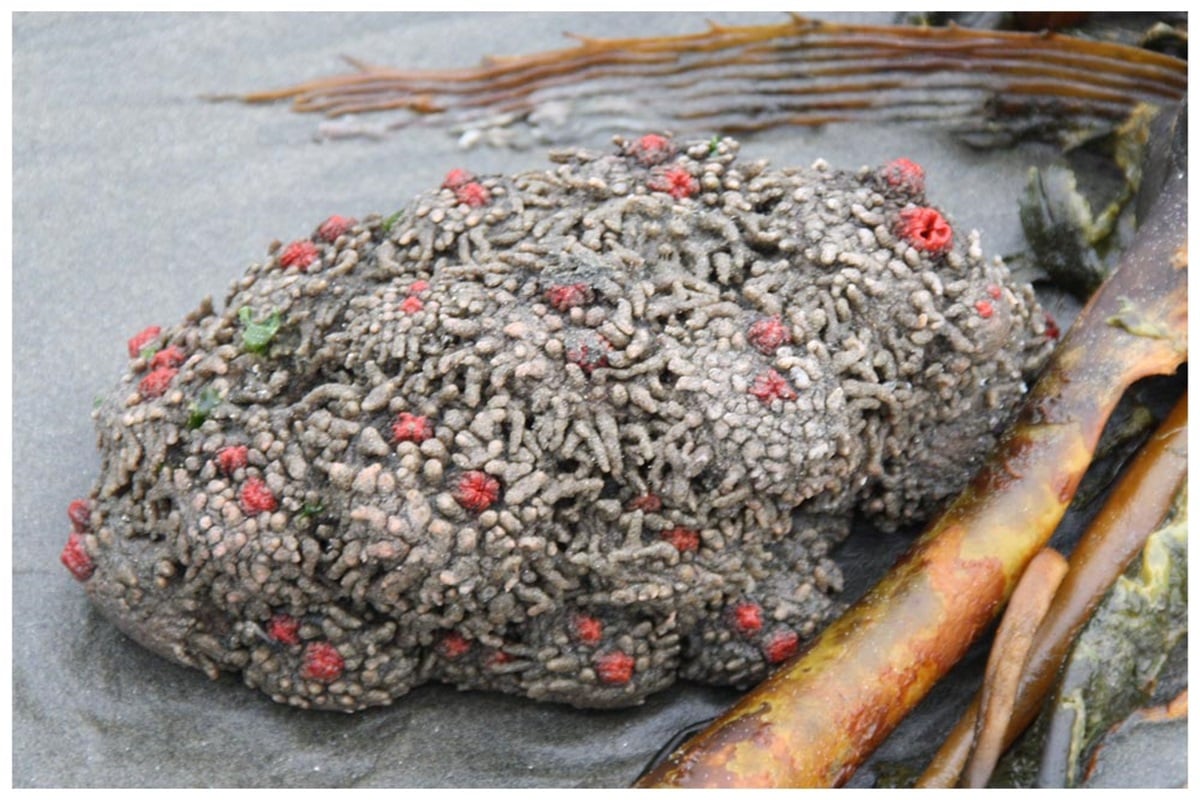You can think about ordinary stone on the coast of Chile or Peru. It looks lifeless, like any other rock you might find. But if you were to cut it open, you’d be in for a surprise; fresh blood would ooze out. This isn’t a scene from a fantasy story or a movie; it’s a real phenomenon found in nature, known as the “Pura Chilensis.”

The Pura Chilensis maybe known as a stone, but it’s actually a living creature that resides in the rocky coastal areas of Chile and Peru. Local people in these regions have discovered that there’s something special inside these “stones”; a flesh-like substance that they can be eat. Sometimes, this seafood is enjoyed raw, while other times it’s cooked and served with salad or rice.
The Pura Chilensis is commercially harvested in these areas. Despite its rocky appearance, this creature thrives in the dark depths of the ocean. It survives by feeding on various microorganisms that float in the water.
One remarkable aspect of the Pura Chilensis is its rare vanadium content. These creatures have an unusual reproductive strategy. They start off as males, but after a certain period, they transform into hermaphrodites – capable of producing both sperm and eggs simultaneously.
In their underwater habitat, Pura Chilensis have a unique ability to cling to rocks. Sometimes, they even transform into parasites, attaching themselves to other marine creatures. As they grow larger, they detach from the rock and undergo special processes to give birth to new Pura Chilensis.
Although they may look like ordinary rocks, Pura Chilensis are far from it. They bleed when cut, and their flesh can be cooked and eaten. If you’re ever curious about trying the seafood, these living stones offer a truly unique culinary experience. They are a fascinating marvel of the sea, reminding us of the incredible diversity and wonders of marine life.
Leave a Reply